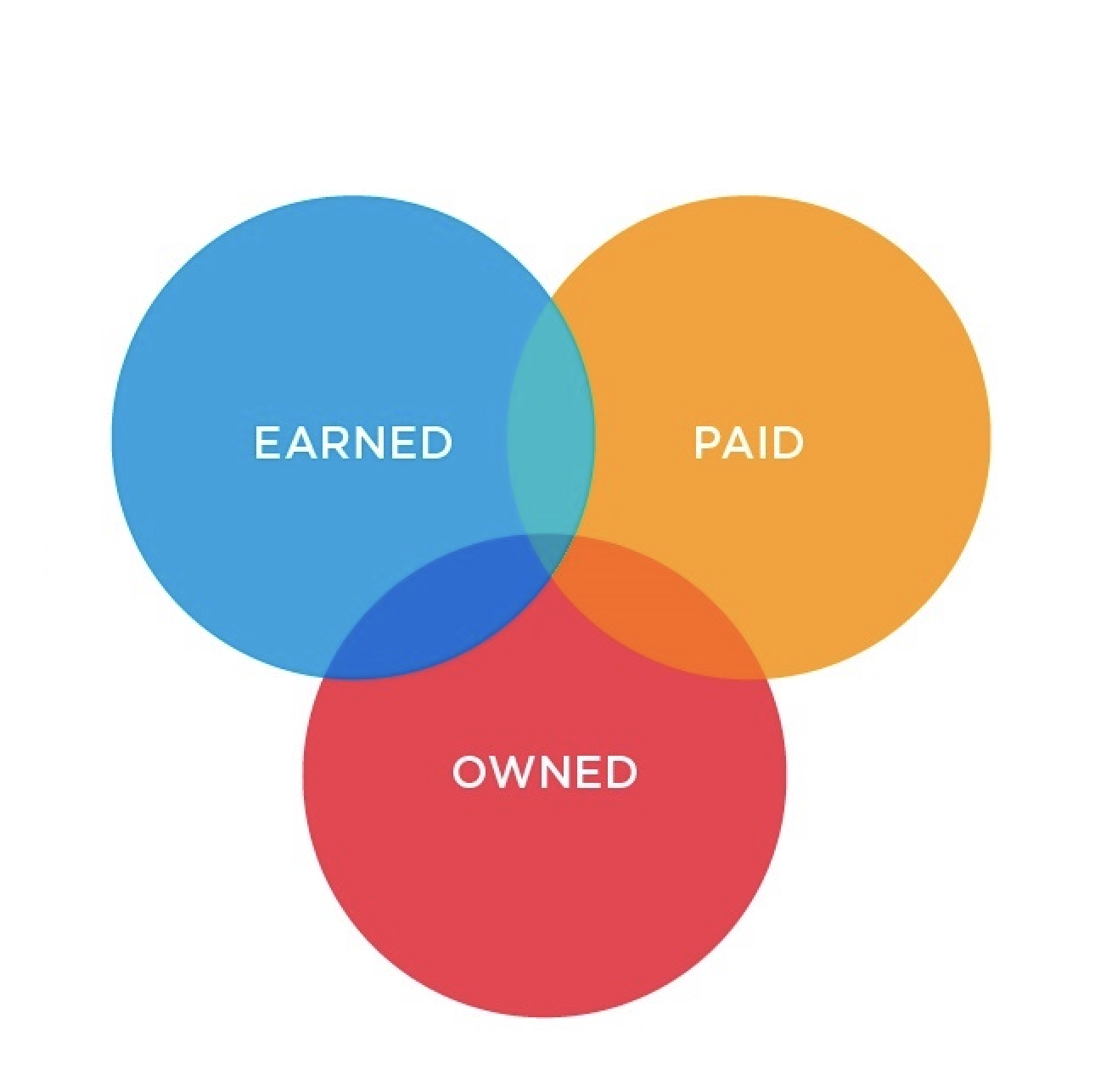One viral moment can propel a brand into billion-dollar relevance… or push it into obscurity. That’s why no leader can afford to rely on a single channel. Influence today depends on being present where your audience actually is, not just where it feels comfortable.
Multi-channel presence has become vital for visibility and impact.
Why Multi-Channel Matters for Leaders

73% of B2B decision-makers trust thought-leadership more than more traditional marketing materials.
Your audience isn’t confined to LinkedIn or a single conference. They move fluidly between platforms, conversations, and communities.
When you show up consistently across owned, earned, and paid channels, your ideas travel further, your credibility compounds, and your leadership becomes the voice shaping the dialogue rather than reacting to it.
Here’s a comprehensive multi-channel thought-leadership strategy across Owned, Earned and Paid platforms for visibility , trust, and measurable business impact.
1. Owned Platforms: Your Foundation
Owned platforms are your anchor. These are the spaces you control fully, with no algorithms or gatekeepers.
-
Personal Website / Blog
Your digital headquarters. A permanent library for insights, frameworks, media clips, and speaking highlights. A clean, search-friendly structure boosts credibility and SEO while giving people a central hub to explore your leadership. -
Podcast (self-hosted feed)
Long-form storytelling you own, even when distributed across apps. Podcasts allow depth and nuance that short-form channels miss. -
Newsletter (Substack, Beehiiv, Ghost)
Direct-to-inbox newsletters build intimacy, consistency, and trust – core for sustaining long-term influence. -
SMS
A high-engagement, immediate connection with your inner circle. Text-based channels like Community.com create intimacy and urgency at scale.
Owned channels are durable assets no platform can take away. They build legacy.
2. Earned Platforms: Your Distribution
Earned platforms expand your visibility and credibility, but they’re not yours to control.
Algorithms change, policies shift, and access can disappear without notice. These channels are valuable for amplifying your voice, but they work best when they funnel attention back to the platforms you own and control.
Engagement on Core Social Platforms
-
LinkedIn: The B2B powerhouse. Used by 97% of executives for professional content sharing. Publish articles, engage in industry conversations, and connect with decision-makers.
-
YouTube & Shorts: Global discovery through video. Short clips humanize leaders; long-form content allows deep dives.
-
Instagram & TikTok: Visual storytelling and short-form video to reach younger and diverse audiences.
-
Twitter/X: Agile commentary, real-time trends, and thought-leadership conversations in tech, policy, and media circles.
Emerging Social Alternatives
-
Threads (Meta): Fast-growing Twitter alternative.
-
Bluesky: Popular among journalists, creators, and early adopters.
-
Mastodon: Decentralized communities with a focus on privacy and niche interests.
Knowledge & Conversation Platforms
-
Medium: Long-form essays with strong SEO distribution.
-
Quora & Quora Spaces: Establish expertise by answering targeted questions.
-
Reddit (AMAs, niche subs): Highly engaged communities that reward authenticity.
Private Communities
-
Slack Groups: Founder/operator spaces like OnDeck or niche industry hubs.
-
Discord Servers: Fast-growing among tech, creator, and investing audiences.
-
Mighty Networks: Branded networks to build a community around your leadership.
Authority Builders
-
Guest Podcasts & Audio: Tap into curated, loyal audiences. Repurpose into clips and blog posts.
-
Conferences & Speaking Engagements: High-impact visibility through keynotes, panels, and roundtables.
-
Media & Publications: Features on relevant third-party publications elevates authority. White papers and proprietary research drive leads and reinforce credibility.
3. Paid Platforms: Your Accelerator

Paid platforms can be strategic accelerators for influence, alignment and demand. They bring your ideas to new circles of influence. In 2025, effective paid media campaigns demand precision, insight and intentionality.
-
LinkedIn Ads: Granular targeting by role, industry, geography, etc.
-
Podcast Interviews: Position your message inside trusted audio spaces.
-
Newsletter Partnerships: The biggest bang for your buck comes from curated, niche opt-in digests in your target industry.
-
YouTube & Twitter Ads: Amplify top-performing video and commentary.
-
Event Sponsorships & Activations: Visibility in curated, high-value spaces.
-
Content Syndication: Place research or articles in platforms like Quartz or Industry Dive.
Optimize paid channels on three dimensions: addressability, shoppability and accountability.
1
What is a multi-channel thought-leadership strategy?
It’s a framework that blends owned platforms (website, newsletters, podcasts), earned platforms (LinkedIn, YouTube, press, guest podcasts), and paid platforms (ads, sponsorships, syndication) to amplify credibility, trust, and influence.
2
Why is a multi-channel strategy important for executives?
Executives who show up across channels build authority, reach more diverse audiences, and reinforce their leadership brand through repetition and credibility.
3
What are examples of owned platforms for thought leadership?
A personal website, newsletters on Substack or Beehiiv, podcasts, and SMS channels like Community.com are all owned platforms.
4
How does the thought-leadership flywheel work?
Owned content is amplified through earned visibility (social, press, podcasts) and scaled with paid reach (ads, sponsorships). Each layer feeds the other, compounding authority and engagement.
The Flywheel of Influence
The real power emerges when every layer works in concert. Instead of scattered posts you have an intentional flywheel that compounds your influence and cements your authority.
- A newsletter essay drives a LinkedIn post.
- That post becomes a Twitter thread or YouTube short.
- The conversation sparks a press mention or podcast invitation.
- The best-performing idea is amplified with paid ads.
- All of it flows back to your owned hub — website, newsletter, podcast — where loyalty compounds.
Integrate. Measure. Evolve.
-
Integrate → Blend owned, earned, and paid platforms tailored to your audience.
-
Measure → Track engagement, media mentions, and leads to refine your mix.
-
Repurpose → Give every insight multiple touchpoints across channels.
-
Evolve → Treat thought leadership like a portfolio: diversify, rebalance, and grow your influence assets.
Lead the Conversation
Attention is currency.
Your thought leadership is either setting the agenda—or being drowned out. Leaders with a multi-channel presence stay visible, relevant, and trusted with their influence anchored on foundations no algorithm can erase. They shape the landscape instead of reacting to it.
With a multi-channel strategy, your influence rises above the noise.
The real choice is this: will you wait for the conversation, or lead it everywhere it happens?






